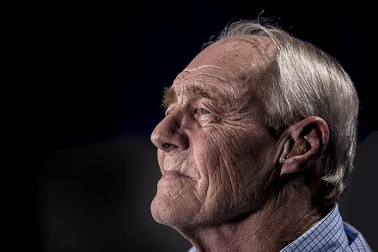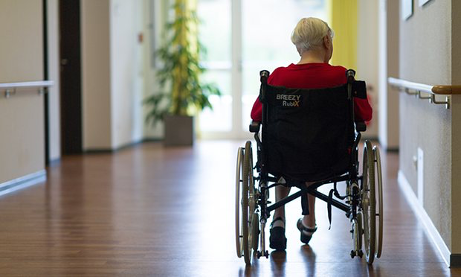
This Blog is published during Dying Matters Awareness Week – an annual reminder to pause and think about why dying does indeed matter, and to continue the push to engage people more in discussions about death, dying and bereavement.
Dying has really mattered in care homes in the past year.
Dying has always mattered on an individual level: to those who are dying, those mourning and those providing care. But this year is the first time that talk about dying in care homes has suffused our conversations, our headlines and our politicians’ rhetoric. So it is the first time that dying in care homes has mattered on a political level.
Care home residents bore the brunt of the first wave of COVID. Deaths outstripped other care settings. Meanwhile care home staff provided personal and psychosocial care for people in their last months, weeks and days of life. They did so, while worrying about their own health, stepping in to fill the void created by the no-visitation policy and with an increasingly unwell and frail client group.
Over the course of many years, care homes have quietly become sub-acute units, caring for and caring about older people with substantial health problems. Yet in the past year, the understated work that this sector has been engaged in has exploded onto the front sheets of newspapers, raised as headline news on the TV and formed part of the constant hum of discussions about COVID-19.
Experiences of what it is like to be living, dying or working in care homes has never felt so tangible. Dying has always mattered in care homes, to the residents, relatives and staff. What’s been unique in 2020 and 2021 is the recognition of how much dying well matters to us all. And that dying well matters in all contexts.
So what does a good death look like in a care home? There have been many scholarly articles written on what constitutes a good death. For individuals this often means factors such as access to appropriate medicines to manage symptoms (especially to ensure a pain-free death), being able to die in your preferred place (often meaning not in hospital), a death which is planned for and where the person can communicate their choices and wishes. While this all sounds reasonable and achievable, it belies the wider context in which dying occurs – where there is inadequate levels of public spending on health and social care services, and inequities in access to specialist palliative care.
The pandemic has rendered it impossible to ignore the deficits. The mortality in care homes has spotlighted the need for the best possible care for people at end of life, and to enable people to live well until they die. Those of us working at the intersection of care homes and palliative care have long-since recognised the need for living and dying in care homes to matter more.
COVID has exposed pre-existing inequalities in care homes. It has made visible the woefully inadequate access to personal protective equipment, the low wages, alongside the emotional toll on care staff. But it has also exposed how little palliative and end of life care routinely occurs with care home residents.
Our Needs Rounds work, established in Australia, and now poised to be implemented in the UK, will be seeking to address this inequity. Needs Rounds will provide specialist palliative care for care home residents to improve their life and death, to support staff confidence and competence in providing palliative care and to generate evidence to shift toward commissioning of specialist support to this area of care.

Post written by Dr Liz Forbat, Chief Investigator